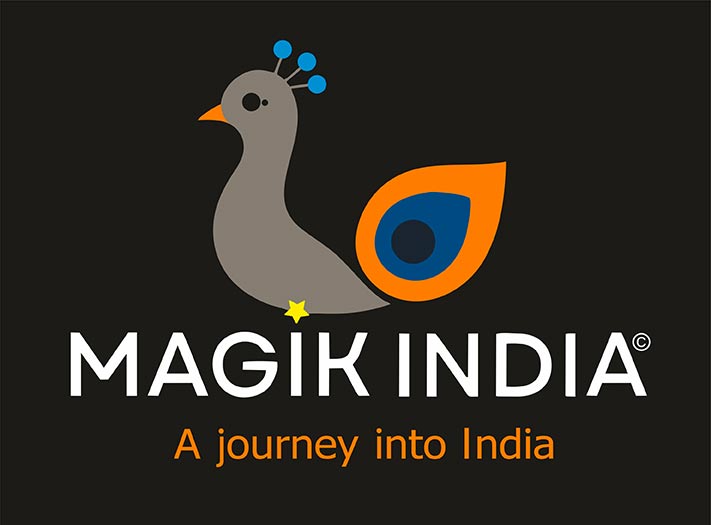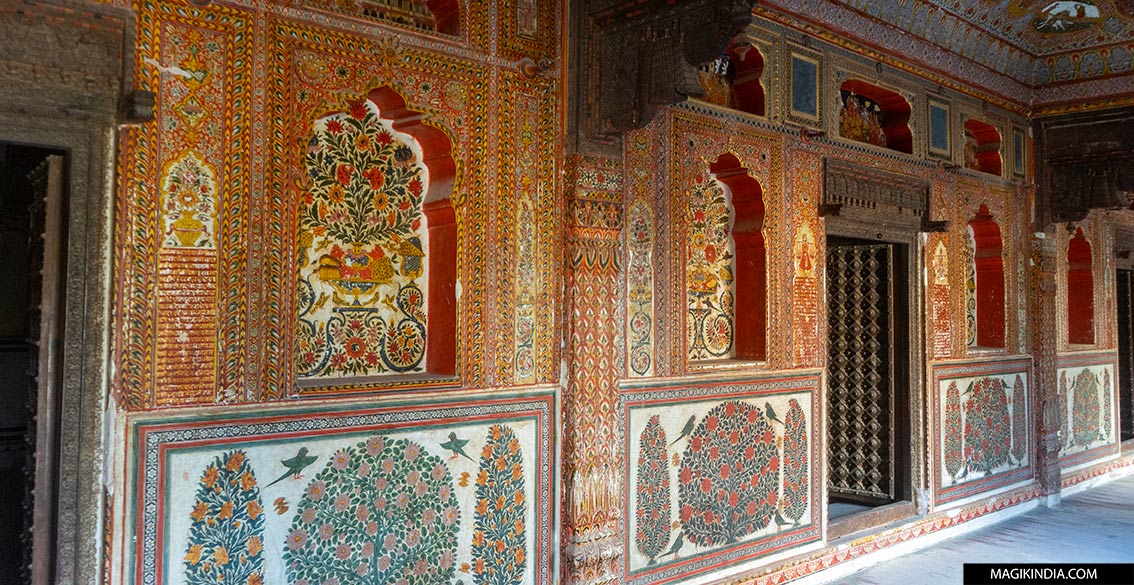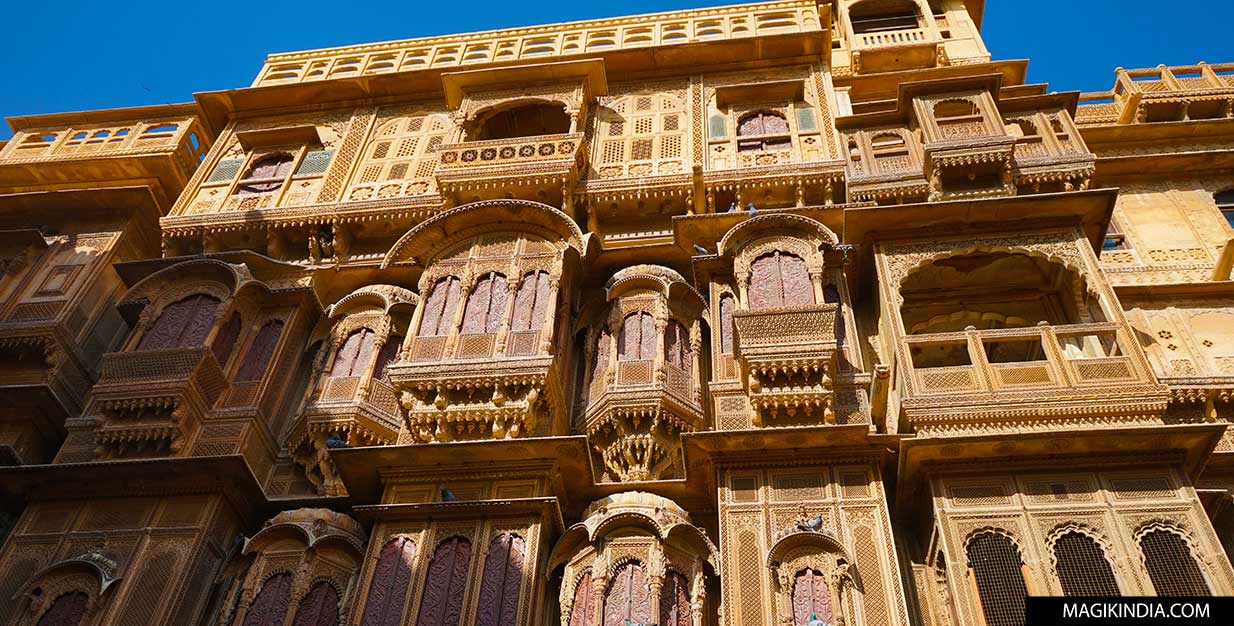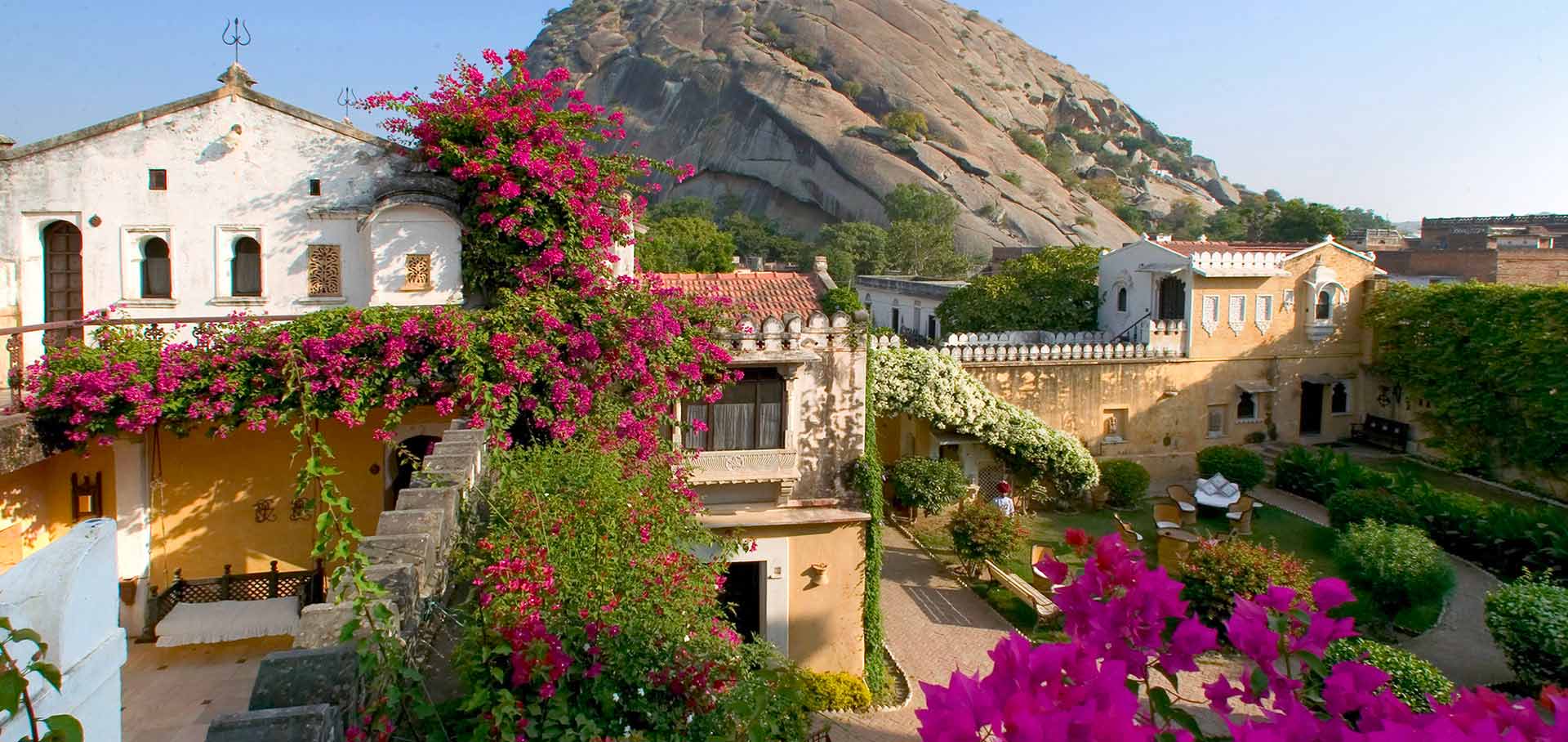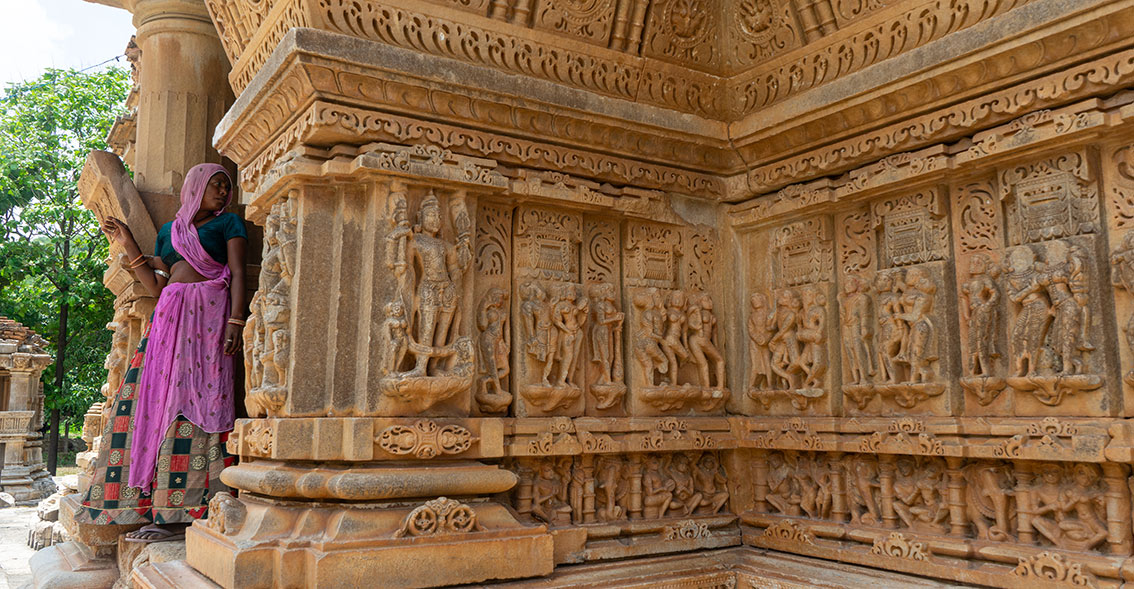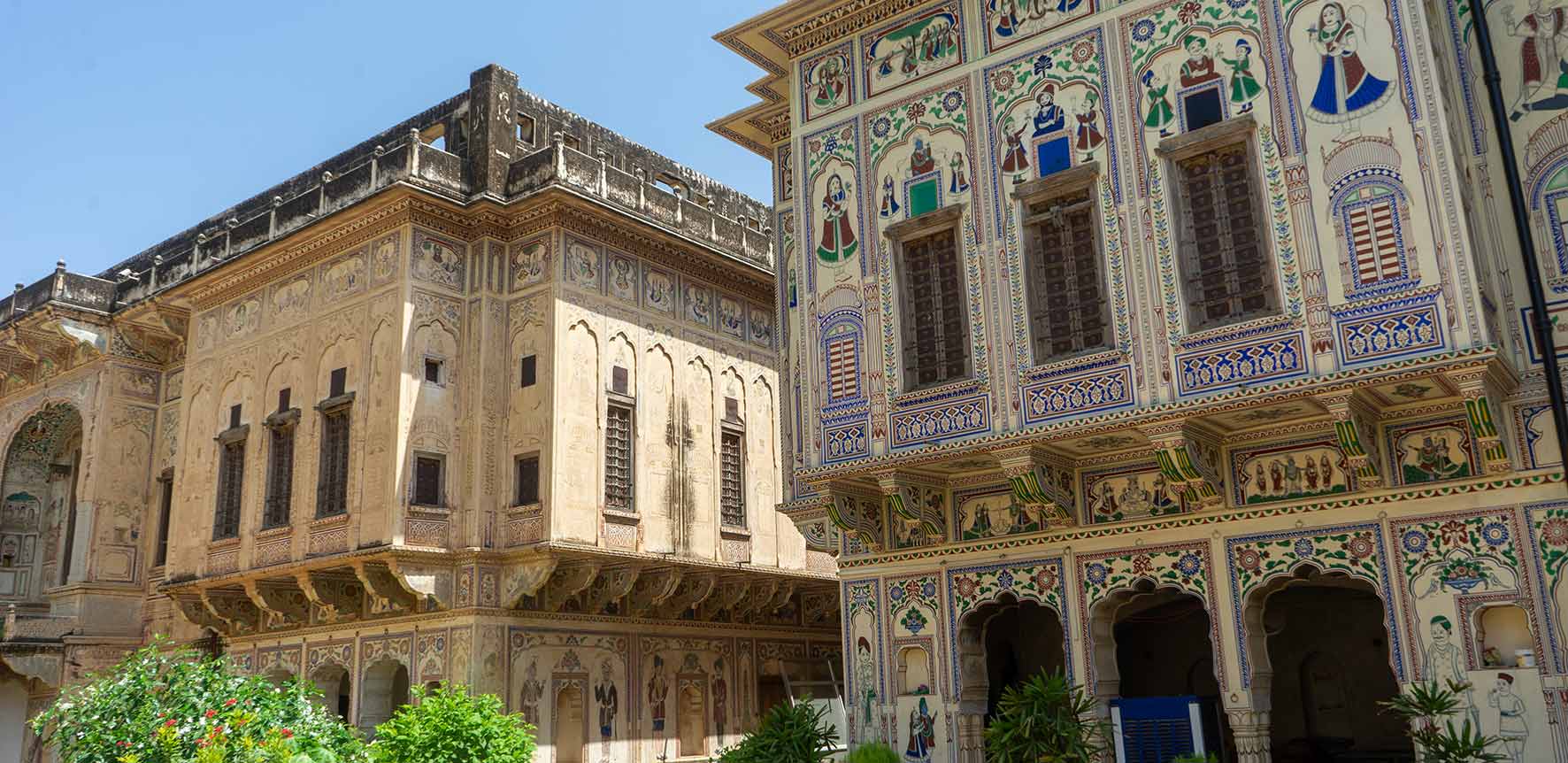
The Goenka double haveli of Mandawa
Among the architectural treasures of Shekhawati, the Goenka Double Haveli in Mandawa stands out as a must-see. This historic house, with its walls richly adorned with detailed frescoes, is a vibrant canvas that tells the story of a bygone era, when trade flourished in the region, driven by the ingenuity of Marwari merchants. A visit to this haveli offers a fascinating immersion into the cultural and artistic heritage of Rajasthan.
The story of the double Goenka haveli
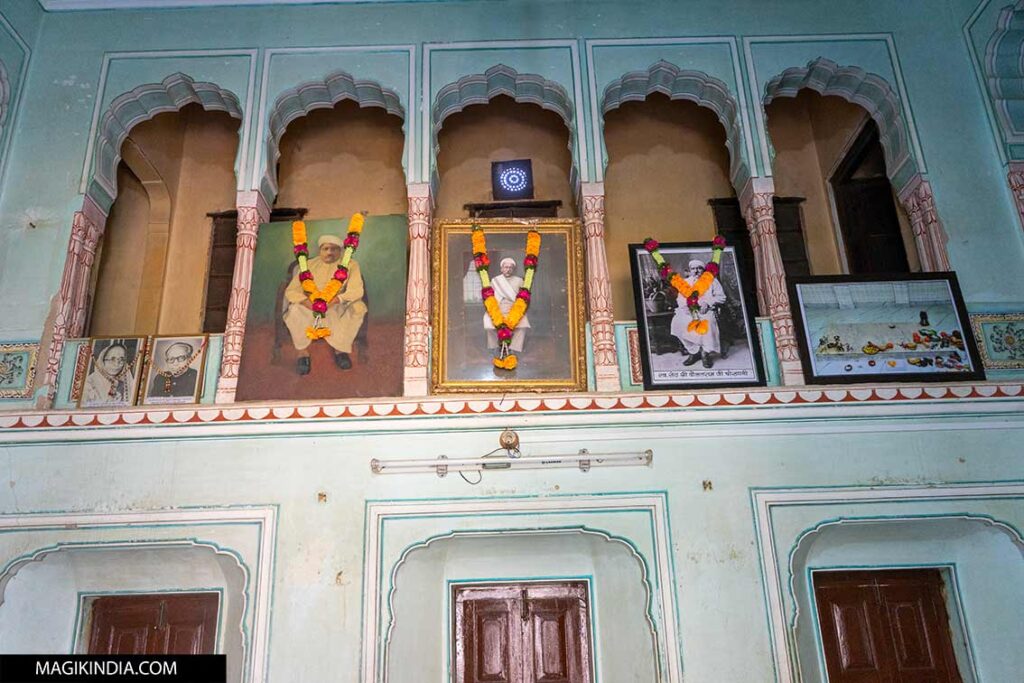
Built by the influential Goenka family, this haveli emerged in the late 19th and early 20th centuries, a period when Mandawa, like the entire Shekhawati region, was a vibrant trading center along ancient caravan routes.

Like many Marwari merchant families, the Goenkas built immense fortunes through their trading activities. Their palatial houses were not just residences, but symbols of their wealth and social standing, a characteristic also found in the mansions of Chettinad, Tamil Nadu.
Architecture of the haveli
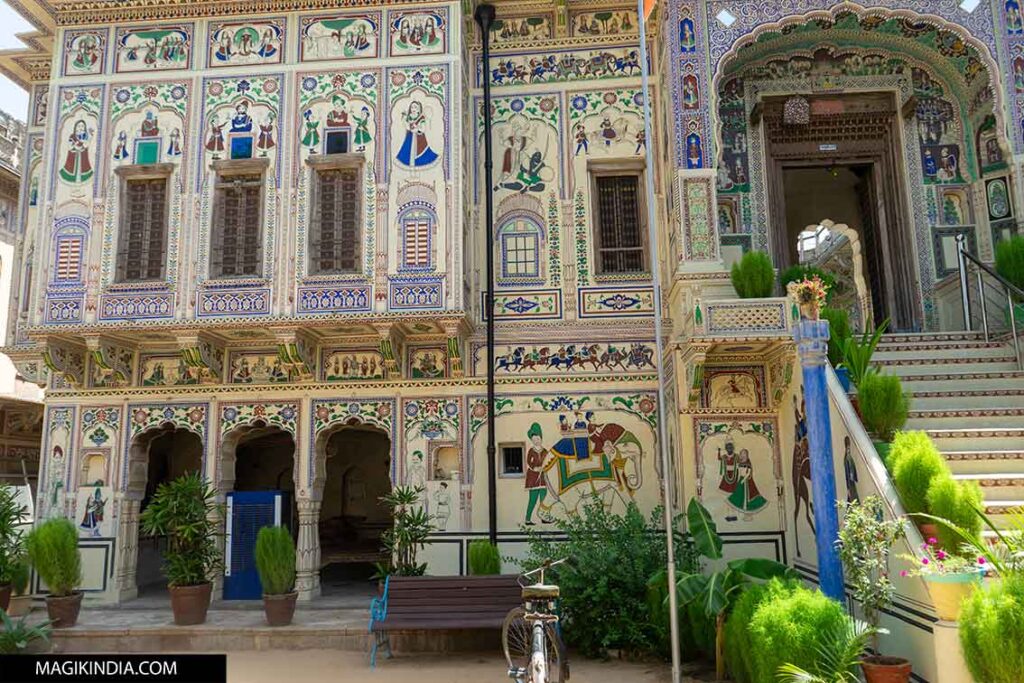
The haveli is a perfect example of Shekhawati architecture, seamlessly blending traditional Rajput styles with European influences subtly incorporated through trade. Every corner of the building is an explosion of color and detail, from the exterior facades to the overhanging balconies, alcoves, and gardens.
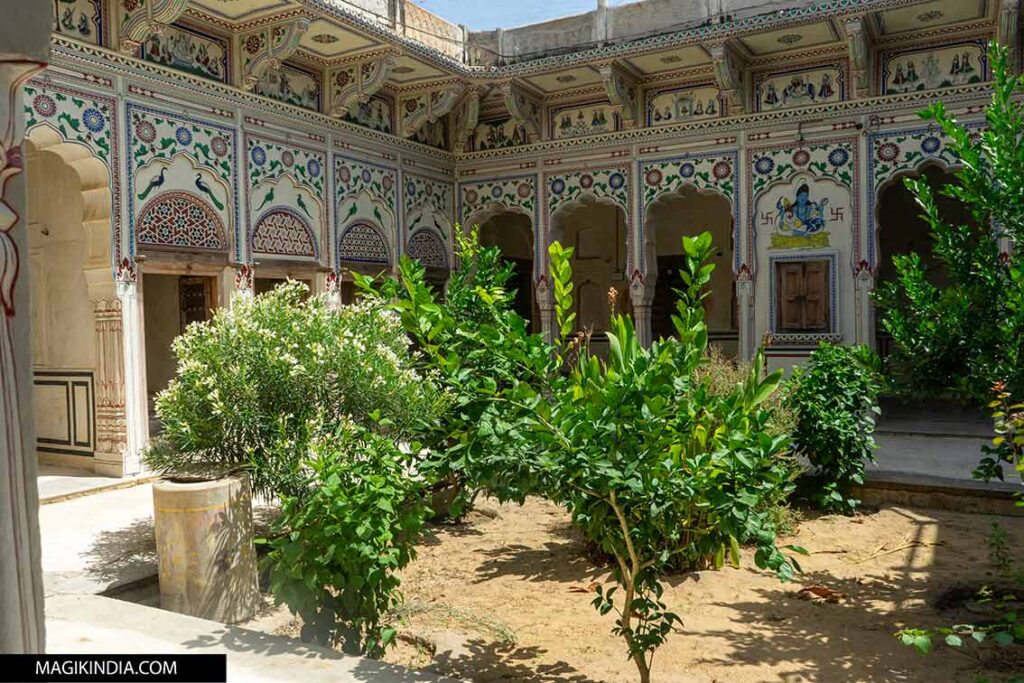
When I last visited in 2024, the property was undergoing restoration. Unfortunately, the renovation isn’t done to the highest standards (very garish artificial colors), but the owners certainly can’t be blamed for maintaining their property when so many others are left to decay in this area.
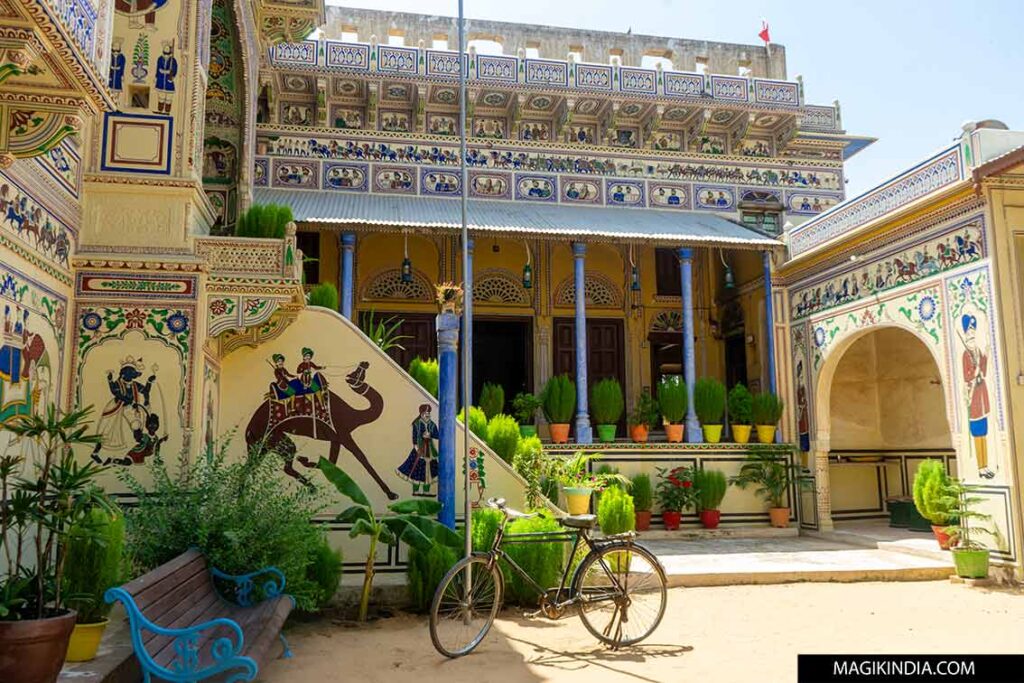
The term “double haveli” is quite literal: this house consists of two separate wings, built by different members of the family. To the south is the Vishwanath Goenka Haveli and to the north is the Tarkeshwar Goenka Haveli. This unique architecture fostered both communal living and the privacy of each family, reflecting the extended family system common at that time.
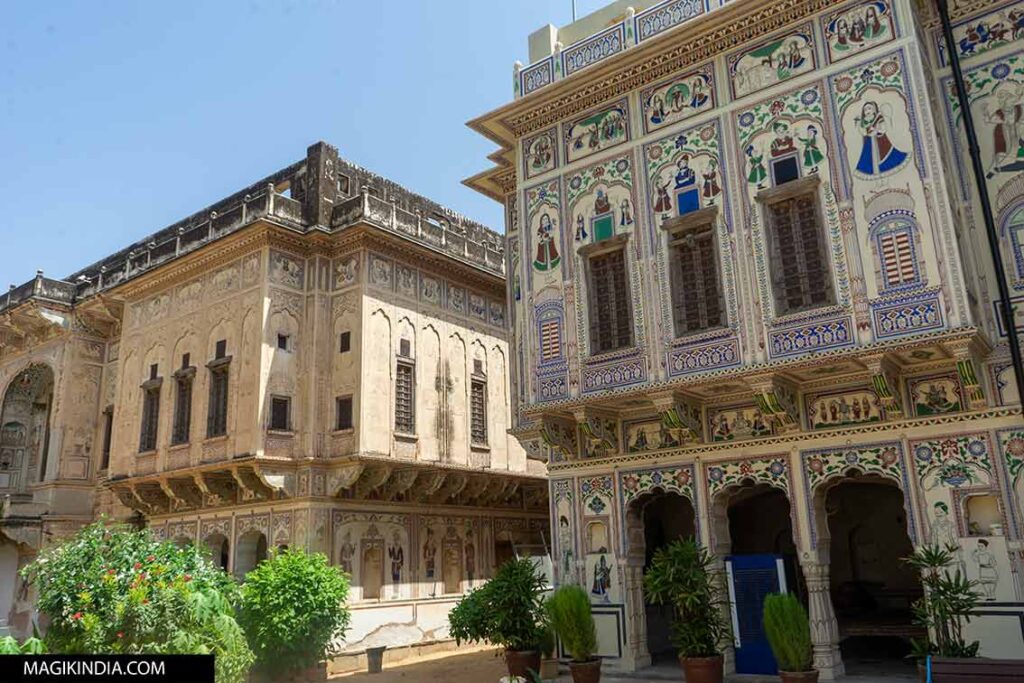
At the entrance to the Goenka haveli, the murals immediately strike with their monumental character. They feature immense representations of elephants and horses, staged in animated processions. These frescoes vividly affirmed the power of the family residing there.
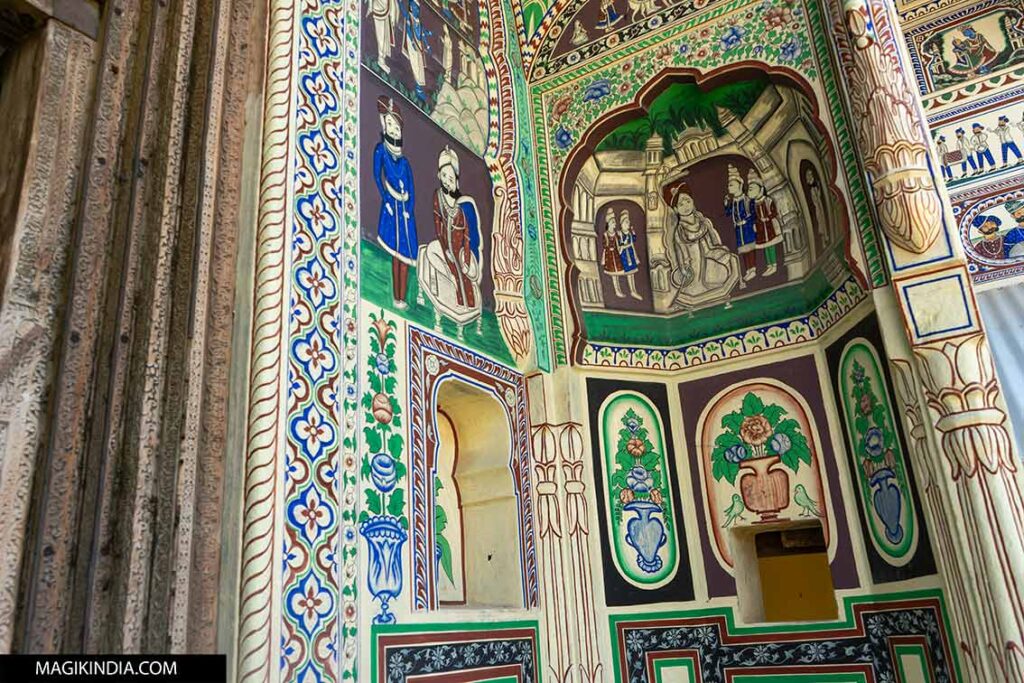
Beyond these large-scale depictions, the walls are covered with an array of themes from traditional Rajasthani life: scenes of women performing daily tasks, musicians, dancers, and local festivals.
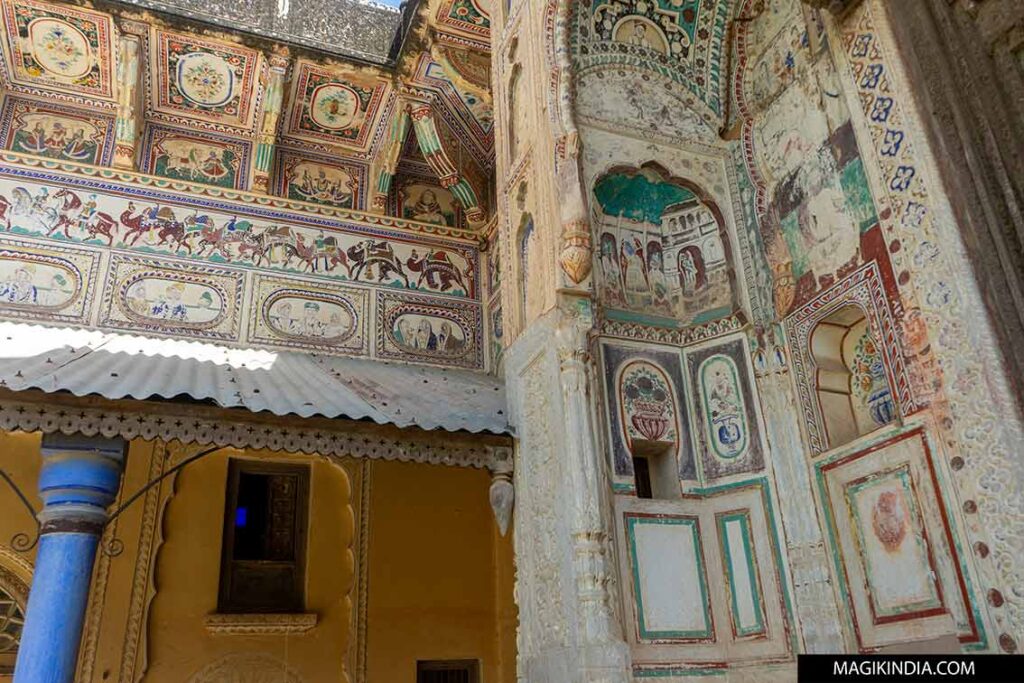
The walls are also adorned with illustrations of religious and mythological stories, including scenes from the Hindu epics Ramayana and Mahabharata, as well as folk tales.
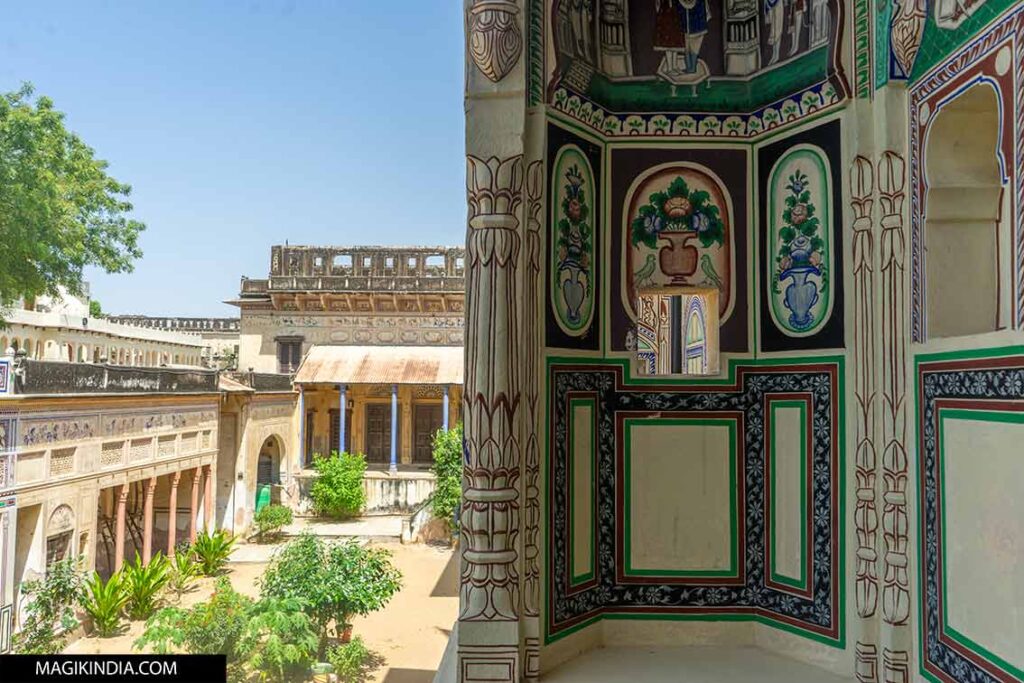
Amidst these numerous frescoes, one can spot humorous caricatures depicting British sahibs and memsahibs in their colonial attire. The integration of these modern elements underlined the Goenka family’s cosmopolitan openness and its adaptation to a changing world.
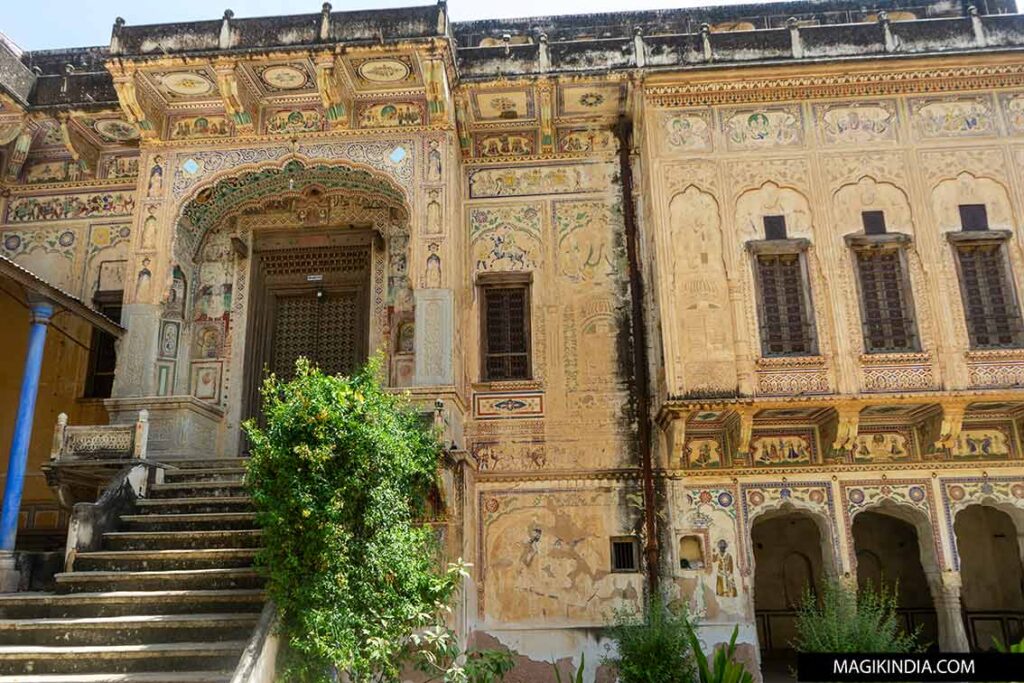
On your next trip to Rajasthan, contact us for a guided tour of the Shekhawati region—it’s one of our specialties!
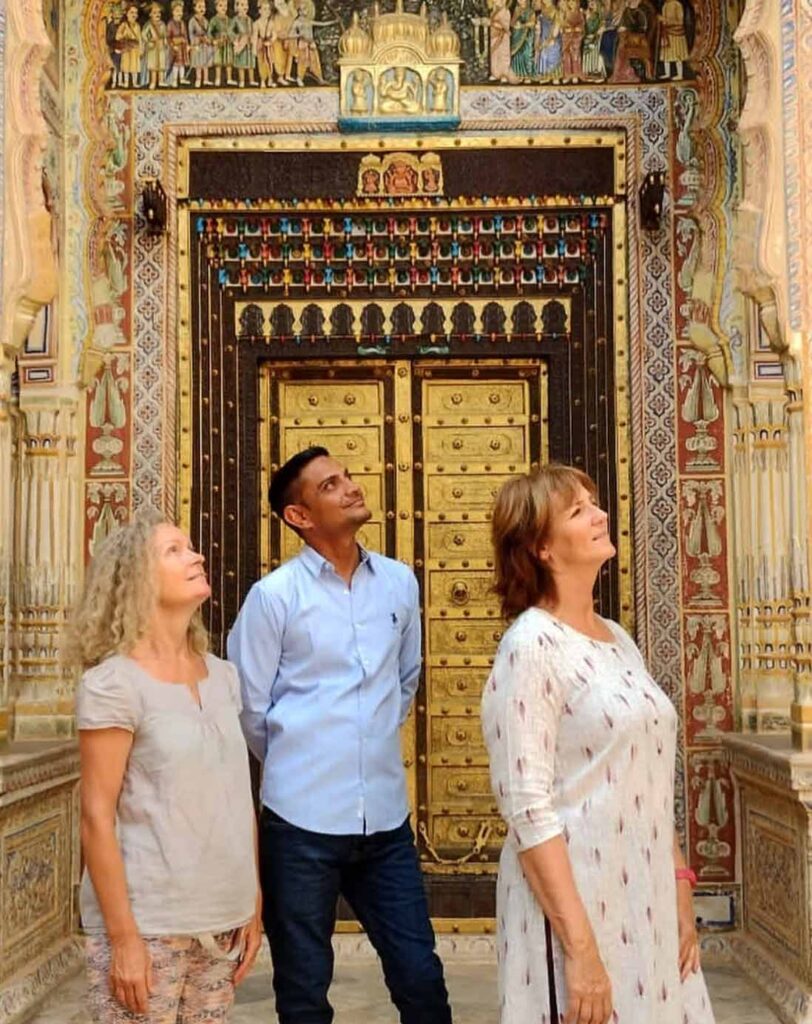
Dinesh Sharma, a native of Nawalgarh, is one of the best official cultural guides of the Shekhawati region and the co-director of MATHINI TRAVEL. With over 10 years of experience in the tourism industry, there’s no corner of Shekhawati that escapes him. He’s eager to share his passion for this unique region of India with you.
Whatsapp: +91 9509122902
